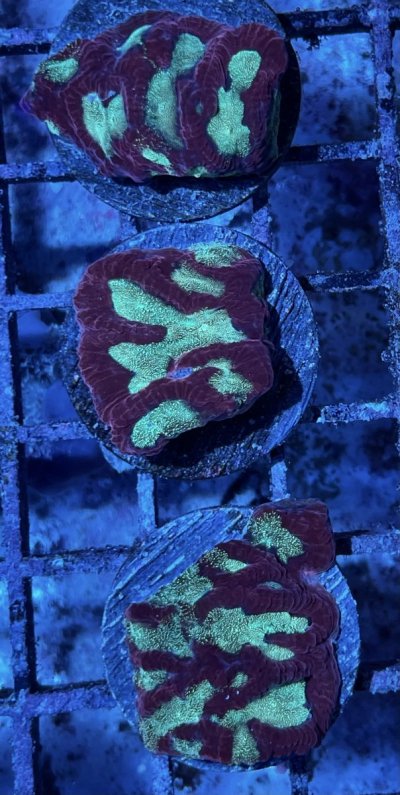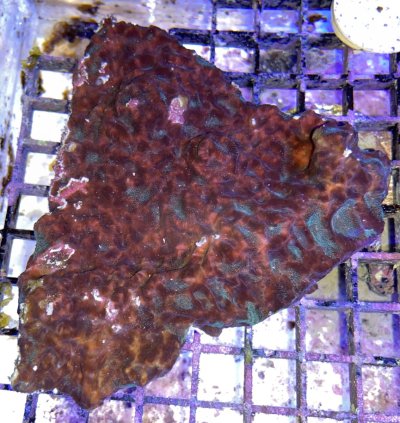I have seen this a number of times over the years in many Genera of corals. To my recollection I have only seen it on LPS (Goniopora, Micromussa (Acans), Symphyllia, Favites/Favia, Goniastrea).
I have no idea what it is despite a rather drawn out search (Some sort of Cyanobacteria?) and have had limited success treating it with Chemiclean baths.
Pictured above is the skeleton of Goniopora that slowly lost tissue revealing the red skeleton underneath. This was well after it had been fragged and was actively growing. You can see the older growth is white on the profile shot which leads me to believe it was infected after fragging.
I have also noticed that it tends to pop up in isolated specimens along side otherwise healthy frags from the same colony and does not readily infect other corals. In this particular system it was in a lower flow/light area. It popped up on the opposite corner of the tank in a Favites/Favia colony but the other corals seem unaffected.
Notice the "mutated" coloration of the colony below and the hints of pink skeleton showing through the tissue. There are two other colonies of the same coral (same source, same "age" in this system) in another tank showing no signs of this issue.
I have done 2 Chemiclean dips so far on the colony and am keeping a close eye on it for changes.
These are frags of the colony pictured above. They are housed in a separate tank in the same system and are not exhibiting any issues with health or coloration.

Has anyone else seen this issue before and do you have any information as to what it is and how it might be treated? I'm not a fan of full-system use of antibiotics as I see that as a slippery slope towards bigger biological issues but I'm willing to experiment on an isolated tank.




















